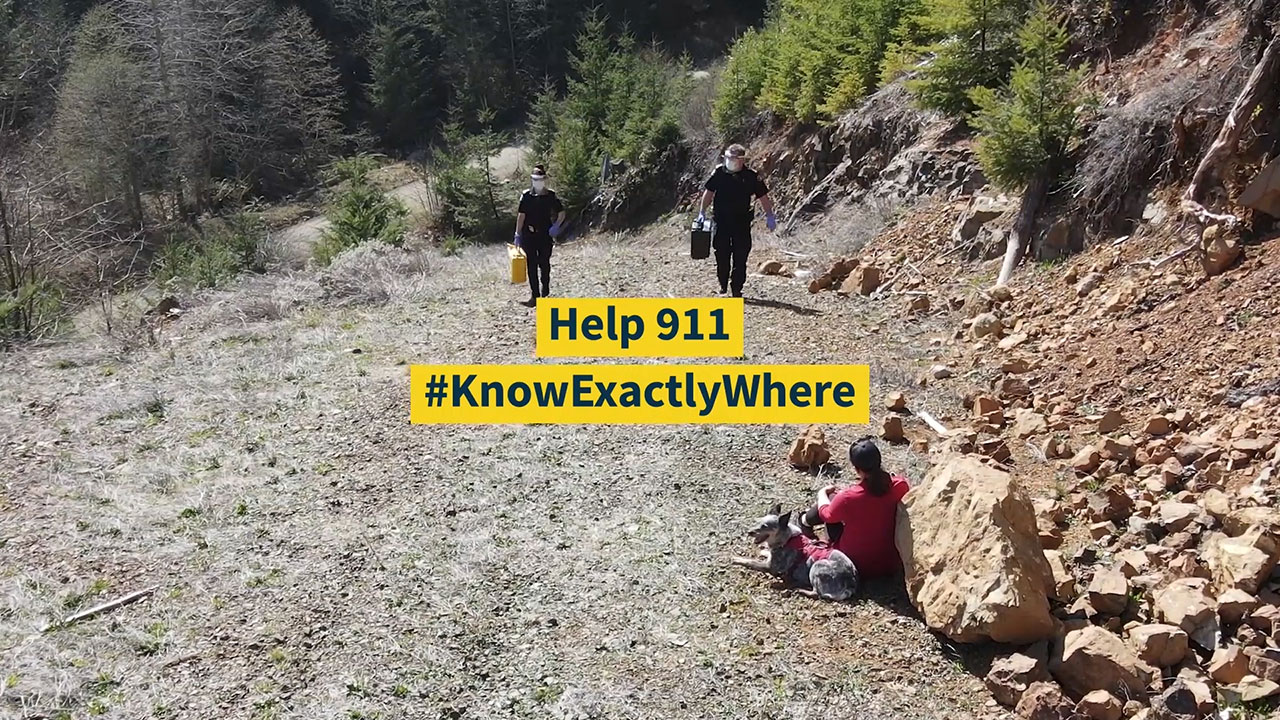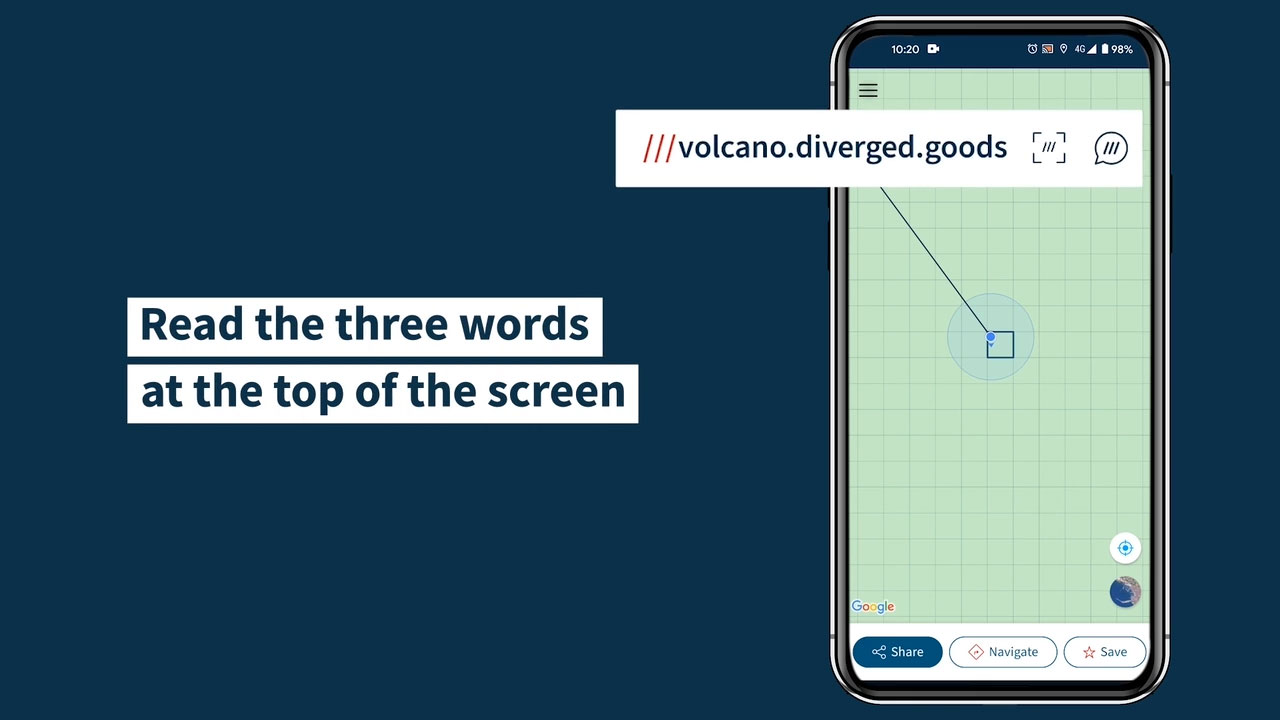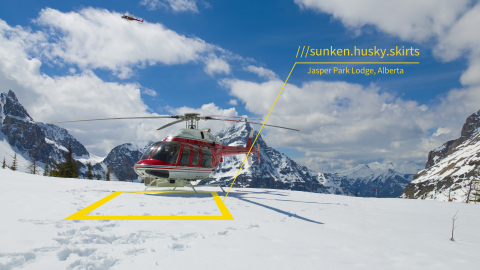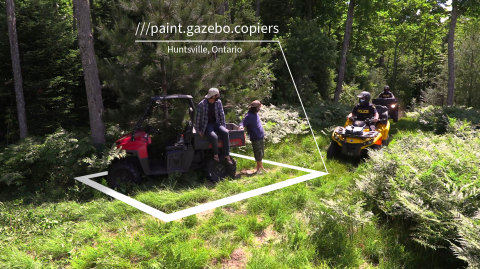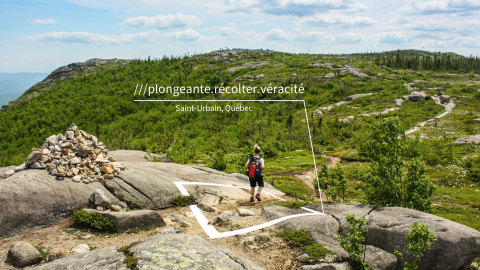TORONTO--(BUSINESS WIRE)--Emergency services across Canada are preparing for a busy Thanksgiving, as people are expected to travel, while lovers of the great outdoors venture out to make the most of Canada’s stunning fall colours and cooler temperatures. Seventy per cent* of Canadian emergency services control rooms surveyed noted they see a spike in calls over holidays and long weekends. To ensure emergency response teams can be directed quickly to precisely where help is needed, control rooms are encouraging the public to download and familiarize themselves with the free what3words app as a simple way to stay safe and support emergency services this fall.
what3words has divided the world into a grid of 10-foot squares and given each square a unique combination of 3 random words: a what3words address. For example ///lashes.candlelit.earned will take you to the main pier at Clear Lake Marina, Riding Mountain National Park. The app is free to download for both iOS and Android devices, and works offline, making it ideal for use in areas with an unreliable data connection, such as hiking trails and campsites. what3words can also be used via the online map at what3words.com.
Canadian emergency services encourage the public to download what3words
Emergency services across Canada are encouraging the public to download what3words - with 100 per cent of those surveyed agreeing it’s “a useful tool for the public to have on their phones.” The technology is available in 50 languages, including Canadian French, and can be used anywhere in the world. The system does not store or track users' location data, and there are no advertisements on the app or map. To date, what3words is available to over 42 emergency communication centres across Canada, with a presence in eight provinces and two territories.
Emergency control centres often cannot automatically detect a caller’s precise location – despite over 50 per cent of Canadians wrongly believing they can* – and in an emergency, identifying precisely where help is needed is critical to getting resources to the scene quickly. However, this can be nearly impossible if you’re in a remote area with no street address, no obvious landmarks, or on an unnamed trail. In these moments, emergency services can waste precious time and resources just trying to locate the person in need of help. Using a what3words address gives callers a simple way to describe precisely where help is needed and allows these services to dispatch resources straight to the scene.
In a recent voluntary survey of 10 emergency control rooms across Canada**:
-
100 per cent of those surveyed reported that using what3words cut response times when it matters most
- 70 per cent reported that what3words saved them at least one minute per call
- 40 per cent reported that it saved them 5 minutes or more per call
- 20 per cent reported that on average the technology saved their team more than 10 minutes per call
- 50 per cent commented that they regularly receive calls from those in hard-to-describe locations, such as hiking trails, lakes, campsites and remote rural areas - and all services surveyed noted that remote landscapes and a lack of landmarks made it difficult to locate callers
- 100 per cent agreed that what3words was a “reliable tool to have as part of the emergency toolkit”
- 100 per cent of those surveyed agreed it’s “a useful tool for the public to have on their phones”.
The technology has been used for everything from reporting fires and rescuing pets to locating critically injured snowmobilers and hikers with pinpoint accuracy, and one control centre reported the technology had been used to assist more than 100 incidents to date.
what3words can save lives
Earlier this year a cyclist fell and injured themselves at Turkey Point, Norfolk, Ont. The caller had no address or landmarks to share with the dispatcher, only that they were “at the bottom of a hill, on a trail about one kilometre from the road.” Through what3words, the victim’s location was relayed to emergency crews, who swiftly located the victim, provided emergency care and rapid transportation to the hospital. Assistant Fire Chief at Norfolk County James Robertson said that without the app, the search for this injured person may have taken significantly longer and the victim’s condition could have deteriorated.
While not intended as a replacement for any traditional “must-pack” survival gear worth bringing along on all hikes, camping trips, and other outdoor adventures, the technology has become a well-used additional tool for emergency services across the globe, saving dispatchers and responders precious time and resources in an emergency. In the UK, what3words is now used by over 85 per cent of emergency services – police, fire and ambulance.
“As the largest city in Canada, Toronto is a bustling city that boasts beautiful greenspaces, waterfront, beaches and tourist attractions. In areas without clearly marked addresses like the waterfront, or hiking trails within greenspaces, it can be challenging for the 9-1-1 Communications Centre to locate a caller in an emergency to dispatch responders. Utilizing what3words’ innovative location technology has assisted and enabled Communications Operators to work with Callers to know exactly where to dispatch resources when every second counts. Help us, help you, know exactly where you are,” commented Tracy Finn, ENP Coordinator, 9-1-1 Emergency Voice Services, Toronto Police.
Since its entry to the Canadian market in 2016, what3words has dramatically increased its presence through strategic partnerships, and to date in 2021 the company has already seen a 97 per cent year on year growth in partners. There are now thousands of opportunities for Canadians to use the system on a day-to-day basis. For example, Mercedes-Benz, Mitsubishi, Ford and Triumph drivers can navigate to any 3-word address in the world using their cars’ navigation systems, and hotels, parks and travel guides are using what3words addresses to mark accessible entrances, beauty spots and starts to hiking trails.
“Across the globe, our technology has proven to be a valuable tool, both for emergency services and members of the public when you need to know exactly where. It’s useful for organizing meet-ups in parks and on hiking trails and beaches, but also provides the peace of mind of knowing that you and your family will always be able to tell emergency services exactly where help is needed. We’re proud to have been adopted by so many Emergency Service partners across Canada and look forward to continuing our expansion in the region at pace,” adds Chris Sheldrick, CEO and co-founder of what3words.
About what3words
Find your what3words address here.
Co-founded in London in 2013 by Chris Sheldrick, what3words is the simplest way to talk about location. The system covers the entire world, never needs updating, and works offline. A what3words address is a human-friendly way to share very precise locations with other people, or to input them into platforms and machines such as ride-hailing apps or ecommerce checkouts. It is optimised for voice input and contains built-in error prevention to immediately identify and correct input mistakes.
The free what3words app, available for iOS and Android, and the online map enable people to find, share and navigate to what3words addresses in 50 languages to date. Millions of what3words addresses are in use around the world, with thousands of businesses using them to save money, be more efficient and provide a better customer experience. what3words is integrated into apps, platforms and websites, with just a few lines of code. Products are available for free or for a nominal fee for qualifying NGOs. Its partners include Mercedes-Benz, Mitsubishi, Triumph Motorcycles, and many emergency services across the world.
what3words has a team of over 100 people, across offices in the UK, USA, Germany and Ulaanbaatar Mongolia. The company has raised over £100 million in capital from investors such as Intel, Aramex, Deutsche Bahn, Subaru and the Sony Investment Fund.
Notes to editors
Resources/Assets:
- B-roll for broadcast use here
- Supporting images and videos: here
- Regional case studies, quotes and assets for Ontario, Alberta, Yukon, Manitoba, British Columbia and Quebec here
- How to use what3words in an emergency: here
Methodologies
* Based on a OnePoll study of 1,000 Canadian adults, aged 18+ in June 2020.
** Emergency Services insights based on a voluntary survey of 10 Canadian emergency service control rooms conducted between 8/24/21-9/24/21. The survey consisted of six multiple-choice questions and four questions that the respondents had to answer with a 5-point Lickert scale. Participants were given approximately one month to fill in the survey, and could remain anonymous if they wished. All returned surveys were included in the analysis.

